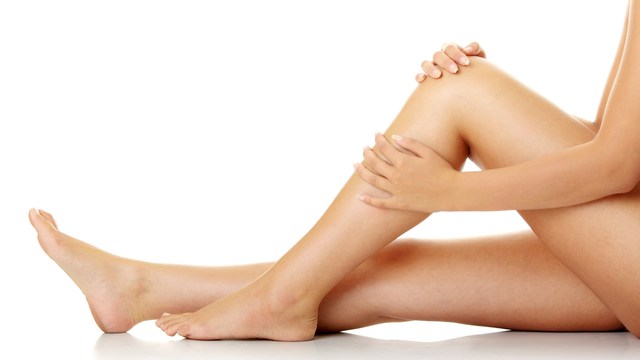 B-D-S-/PhotoSpin
B-D-S-/PhotoSpin
It is estimated that 1.3 million Americans are affected by rheumatoid arthritis (RA), an inflammatory form of arthritis. Of that number, 75 percent are women. RA most often strikes between the ages of 30 and 40, but it can affect people of any age, even very young children. (1, 2)
While osteoarthritis is the erosion of, or damage to the cartilage through wear and tear, rheumatoid arthritis “is a chronic autoimmune disease in which the immune system attacks the joints. RA usually occurs in a symmetrical pattern, affecting both hands, knees, ankles, feet, hips, elbows, and shoulders.” (1)
In all these joints, a thin tissue called synovium lies between the two pieces of joint cartilage on the end of each bone. Cartilage prevents the bones from rubbing against each other during activity. The synovium lubricates the joints so they can glide smoothly and painlessly. When the synovium becomes inflamed, it leads to damage and permanent destruction of the joint. (1)
Symptoms of rheumatoid arthritis in the knee may include (1):
• Pain
• Swelling, inflammation
• Stiffness
• Warmth around the knee joints
• Fever
• Flu-like symptoms
• Fatigue
• Weight loss
• Issues with skin, heart and lungs
There is no cure for rheumatoid arthritis in the knee, but treatments are available. Disease-modifying anti-rheumatic drugs (DMARDs), NSAIDs (non-steroidal anti-inflammatories), and/or low-dose steroids are used together. A list of possible DMARDs can be found here.
When all other avenues of treatment have been tried and considered, a total joint replacement or a synovectomy may be options. (1) Joint replacement means replacing existing damaged cartilage with metal and/or plastic devices to do the job of healthy cartilage. Synovectomy means openly or arthroscopically removing the inflamed portions of the synovium, which may relieve knee pain for up to five years. (1)
Osteoarthritis in the Knee
As we’ve already learned, osteoarthritis (OA) occurs when the joint cartilage is worn away over time. It is a progressive disease most commonly affecting middle-aged and older people. (4)
As the cartilage wears away, the ends of the bones become rough like sandpaper causing the joint to "stick" or lock resulting in knee pain, stiffness and loss of range of motion. Ordinary activities such as walking, climbing stairs or even getting out of bed can be affected. (3)
Other symptoms of osteoarthritis in the knee may include:
• Moderate or severe knee pain while resting, day or night
• Chronic knee inflammation and swelling that doesn’t improve with rest or medications
• Knee deformity, a bowing in or out of your knee
• Knee stiffness or the inability to bend and straighten your knee
• Eventual lack of pain relief from NSAIDS (3)
Treatment for osteoarthritis in the knee may include:
• Non-steroidal anti-inflammatories (NSAIDs) such as ibuprofen or aspirin
• Lifestyle modifications – losing weight, switching from running or jumping exercises to swimming or cycling, minimizing climbing stairs, exercises that help increase range of motion and strengthen muscles (4)
• Walking using supportive devices such as energy-absorbing shoes or orthotic inserts, brace or knee sleeve, or canes (4)
• Cortisone injections
• Physical therapy
• Osteotomy surgery to reshape the shinbone and thighbone to improve knee alignment
• Knee replacement surgery (3)
Sources:
1. Rheumatoid Arthritis of the Knee. WebMD. Web. May 15, 2013.
http://www.webmd.com/rheumatoid-arthritis/guide/knee-ra-rheumatoid-arthritis-of-the-knee
2. How Rheumatoid Arthritis Affects Your Life. Hoffman, Matthew. WebMD. Web. May 15, 2013.
http://www.webmd.com/rheumatoid-arthritis/features/how-rheumatoid-arthritis-affects-your-life
3. Osteoarthritis of the Knee. University of California San Francisco Medical Center. Web. May 15, 2013.
http://www.ucsfhealth.org/conditions/osteoarthritis_of_the_knee/
4. Arthritis of the Knee. American Academy of Orthopaedic Surgeons. Web. May 15, 2013.
http://orthoinfo.aaos.org/topic.cfm?topic=A00212
Reviewed May 15, 2013
by Michele Blacksberg RN
Edited by Jody Smith






Add a CommentComments
There are no comments yet. Be the first one and get the conversation started!